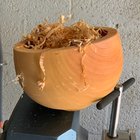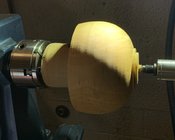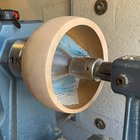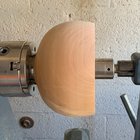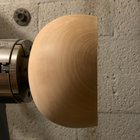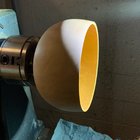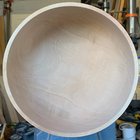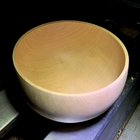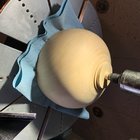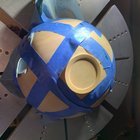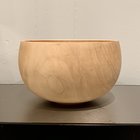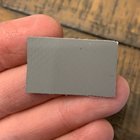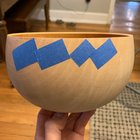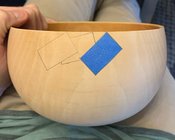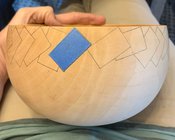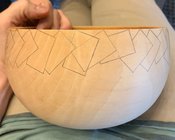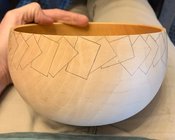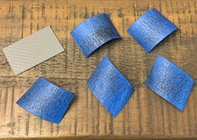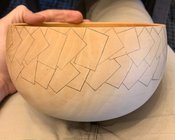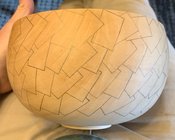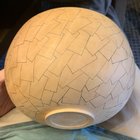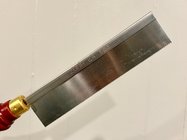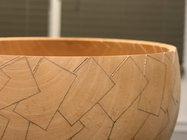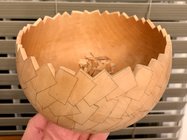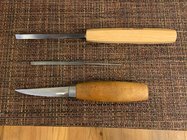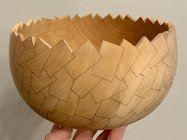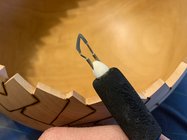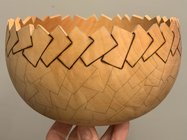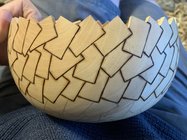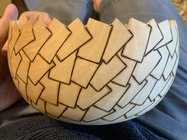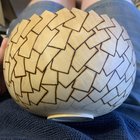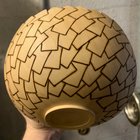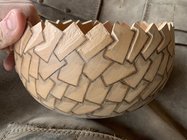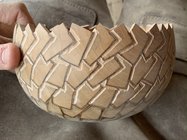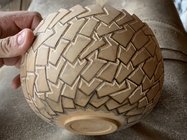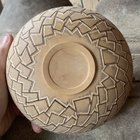Nice so far Michael...sort of like segmenting in reverse. I think the masses on this forum don't understand the complexities of a well thought out segmented piece.
@Russ Braun had recently posted a fantastic follow along project. He is several levels above me in this regard so I a glad he put the time in.
Edit: Please show how you secure the bowl when carving those rectangles...ok...pretty please

Thank you Paul! Oh yeah, Russ' project was wild to follow along. Far beyond my skill level, but I still learned a lot. I think that's the benefit of these follow alongs--even if it's a project that you (general "you", not
you you) won't make, there are still plenty of things to learn and apply to your own work. And if nothing else, sometimes it
is nice to see how the sausage is made.
I'm glad you asked about the carving. For the border, I just used my body as a stabilizer. Here is each tool in action (after the fact, and a big thanks to my wife for taking these photos a few minutes ago). For the saw, I lightly squeezed the bowl between my legs, and used my thumb and forefinger to stabilize the rim near the saw. I tried to position the bowl so that my cuts were always straight-down, as this kept my shoulder wrist and finger in alignment. Easier said than done.
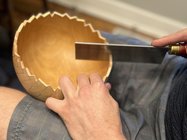
For the knife, it was mostly my fingers/wrist that stabilized everything. Small, controlled slices. I am right-handed, and although I've worked a being ambidextrous in my turning, hand-carving I have not. That said, most of cuts involved pulling the blade with my right hand, and simultaneously pushing the blade with my left thumb and forefinger. Part of the difficulty of this is that a lot of the cuts go against the grain. Like most things, a super sharp blade is critical. The bowl itself is stabilized by pressing on one of my thighs.
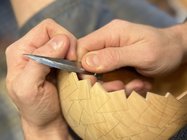
With the riffler file, most of the motion comes from the wrist and/or the shoulder, so it's important to stabilize the file. and keep it at a specific angle. I find it helpful to clamp the very end of the file between my pinkie and ring finger, secure the base of the cutting surface with my thumb and middle finger, and then press down on the file with my forefinger. This keeps the file flat on the wood, and really eliminates the chatter you can get with a light tool like this. My left wrist/palm/middle finger keep the bowl stable.

With the carving chisel, my approach angle is quite steeper. I press down on the rim of the bowl with my right wrist and use my left handle to oppose the pressure from my leg and other hand. I mainly use my right middle finger to stabilize the blade, and thumb and forefinger to grip and press down. My left pointer finger is also important as a stabilizer. The cutting power comes from fine wrist movements, and I keep my elbow/shoulder steady to add control.
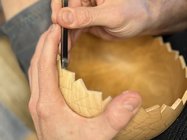 @Paul May
@Paul May that's probably a long answer for a short question, but it's fun (to me) to think about these things critically. I'm not sure I've ever put these movements in text before. Thanks again for asking--great question.

